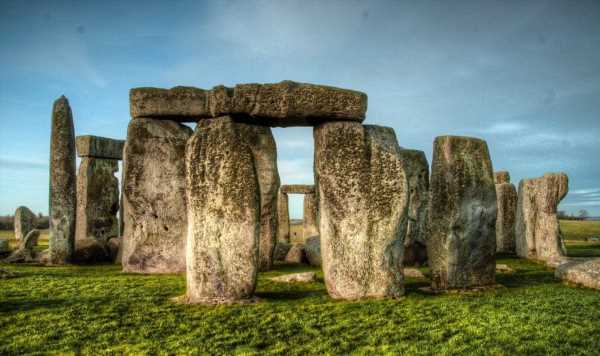
Stonehenge: 'Mind-blowing' new discoveries discussed by experts
We use your sign-up to provide content in ways you’ve consented to and to improve our understanding of you. This may include adverts from us and 3rd parties based on our understanding. You can unsubscribe at any time. More info
According to a new study, early hunter-gatherers roamed the land a millennia before the mysterious Stonehenge was erected. The researchers uncovered DNA evidence that led to the discovery that Stonehenge was actually built on a site that had once been an open mix of plains and meadows home to hunter-gatherers for thousands of years.
The study from Southampton University, published in the journal PLOS ONE, looked at the often overlooked history of Stonehenge before the Bronze Age- Neolithic period when one of the world’s most famous prehistoric monuments was built.
Previously, researchers believed the region was comprised of a closed canopy forest at the time.
However, new research shows hunter-gatherers occupied this site for 4,000 years up until the time of the earliest known farmers and monument-builders in the region.
The researchers studied pollen, spores, sedimentary DNA, and animal remains at the site known as Blick Mead, which lay at the edge of the Stonehenge World Heritage Site.


Lead author and doctoral student Samuel Hudson said: “It is worth noting that almost the exact location in which Stonehenge was created had been the site of likely ritual activity marked by the presence of timber posts during the earliest period of occupation by hunter-gatherers at Blick Mead.
“This all raises the possibility that the creation of Europe’s largest monumental landscape not only had spatio-ecological continuity with the late hunter gatherer landscape, but in many ways was a development of it as the maintenance of open areas by herbivore grazing and associated hunter-gatherer activity pre-adapted this.
“The Stonehenge World Heritage Site is globally recognised for its rich Neolithic and Bronze Age monumental landscape, but little is known of its significance to Mesolithic populations.

“Environmental research at Blick Mead suggests that hunter-gatherers had already chosen part of this landscape, an alluvial clearing, as a persistent place for hunting and occupation.”
Mr Hudson and his team’s findings also suggest that early humans who erected the Stonehenge circle did so in an already well-maintained land that was used by large cattle grazers.
These grazers tended to the now long-extinct auroch, which is the wild ancestor of all cattle, and thus is regarded as one of the most important animals in the history of mankind.
Hunted to the point of extinction in 1627, the DNA of this wild cattle is still alive and spread out among several original cattle breeds.
DON’T MISS:
Poland outsmarts Putin as Kremlin CUTS gas supplies into EU [REVEAL]
Vallance skewers EV plans as going green ‘totally impossible’ for most [INSIGHT]
UK embarrassment laid bare: US hid details of NUKING British satellite [REPORT]


Mr Hudson added: “The environmental data obtained from Blick Mead supports the theory that the wider Stonehenge landscape retained some persistently open areas before the extensive clearing seen in the Late Neolithic which were of great importance to late Mesolithic hunter-gatherers.
“These were particularly favoured locations of springs, wetland and floodplains where ungulate grazing disrupted the natural succession and regrowth of woodland.
“Likely, these clearings were also locations for ritual activity which drew people in from wide areas.”
Source: Read Full Article